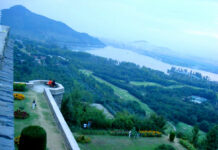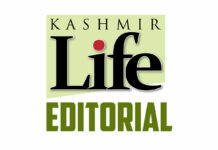Amarnath tragedy
Kashmir, in a way, has been into mourning for a long time now. It has already a generation of its population in its most productive age lying buried during last 29 years. It understands the pain of loss and separation, perhaps better than many other people inhabiting South Asia. So when suspected militants fired upon a Gujarat bus carrying returning Hindu pilgrims from Amarnath, it triggered a serious reaction in real and the virtual worlds. It was widely condemned. Kashmir, an age old tourist spot, can not afford such incidents. It is much larger crisis for the host population when the slain are pure innocents, merely here for the reasons of faith or leisure. These two factors were fundamental in creating the huge reaction in Kashmir.
While the state and central governments’ acknowledged this purely human response, sections of politicians and commentators, tried recreating and rediscovering a ‘new Kashmir’ in this response. Longer debates and larger essays were written about how this reaction actually revived Kashmiriyat, a so called concept that exists only in official narrative in Kashmir. The fact is that Kashmir never changed and it was always like this, even before the Gobles in Srinagar discovered Kashmiriyat. Kashmir has a very rich history of communal amity and tolerance, which was at full display in the darkest days of 1947 when Gandhi saw that “ray of light” at a time when a section in Jammu was literally being culled. Off late, however, the TV in India has discovered a Frankenstein in Kashmir and all the responses and analysis are directed at that. This has the potential of disturbing Kashmir further. So if people in power and authority have no argument to acknowledge hard realities, they watch silently as they have been doing for all the years of mayhem and destruction of Kashmir.
Control the Line
For the last two years or more, J&K’s population living in the periphery closer to the Line of Control and the Internal Border are living a highly unpredictable and miserable life. Their survival is solely dependent on the mood of the gunner who lives near by in the dungeons and the bunkers. The soldier himself is directly dependent on the policymaker in Delhi and Islamabad. Almost daily, the rival sides are shelling each other. The primary victim of the shelling is the immediate population living closer to the divide. Incidentally, most of them are kins, separate by an artificial and enforced divide.
The so called border areas resumed a happy life after decades when the Atal Behari Vajpayee announced the ceasefire. Despite various tensions at the diplomatic levels, the ceasefire was respected by both the governments. Off late, however, when the diplomacy between the two nuclear neighbours dipped to a new low, apparently because or the domestic politics, it was violated more frequently. Now the soldiers are shelling each other routinely. It costs the two armies a lot of costly ammunition bt to Kashmir, it costs precious human lives.
The state government has had the stated position that it will seek a better bilateral relationship between India and Pakistan. Somehow, this objective has eluded the alliance with polar differences. While the countries may talk, only after the diplomatic pressures from third parties, there is a possibility of J&K government pushing for resumption of the ceasefire at LoC. This is the high time the coalition picks up threads it has lost in the governance maze.
Off late, there has been a very convinsing argument that J&K can never be stable and peaceful unless its borfders are calm and quite. Once the population at borders are pushed towards hinterland, it disrupts the entire chain. As the government starts addressing the displacements near the divide, it impacts not only the coffers but the agriculture too. It adds to state’s dependence. This argument must figure in the public debate and policy debate again.
After GST
After J&K finally joined the GST regime, the empowerment or the disempowerment of the state is reduced to mere political argumentation. The new taxing regime is as good a reality in Kashmir as it is in Kanyakumari. Now there are two vital things that must make follow up.
Firstly, the people need to be adequately educated about the new system. There are serious issues that must be tackled at the earliest. The manufacturing sector is still in a crisis on the sudden disappearance of the excise duty. Though the state government has promised remissions and continuation of the concessional policies, there is no model or a direction available to them. Some of the manufacturers, including in state sector, have stopped sales because they will be booking major losses in absence of the concessions, they were enjoying earlier. If the earlier concessions are not available, the cement, for instance will become costlier by around Rs, 20,000 a truckload. The government must clear it as early as possible.
There has not been any movement on the other possibilities that were outlined by the government earlier. Who will collect the GST and how the appellant systems will work?
Secondly, the debate on GST should slightly move a step further. Can the special powers of the state, howsoever rudimentary they might be, can be leveraged to the benefit the people more. The constitutional safeguards enshrined in the Presidential Order do provide a window of opportunity to think innovatively and make creative interventions with respect to imposition of taxes, while being part of the new taxation regime. The creative intelligentsia that has now graduated in the GST must start giving attention to this possibility. The legal luminaries, constitutional experts, development practitioners, the business leaders and the civil society need to put their heads together to extract maximum benefits from this window of opportunity. This would be a real service to the hapless people of this state.









